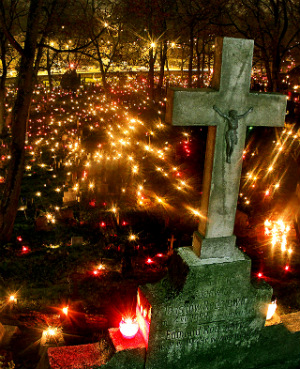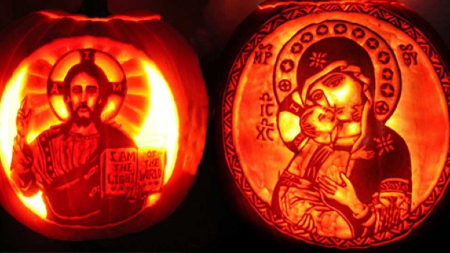 Hi readers, it seems you use Catholic Online a lot; that's great! It's a little awkward to ask, but we need your help. If you have already donated, we sincerely thank you. We're not salespeople, but we depend on donations averaging $14.76 and fewer than 1% of readers give. If you donate just $5.00, the price of your coffee, Catholic Online School could keep thriving. Thank you. Help Now >
Hi readers, it seems you use Catholic Online a lot; that's great! It's a little awkward to ask, but we need your help. If you have already donated, we sincerely thank you. We're not salespeople, but we depend on donations averaging $14.76 and fewer than 1% of readers give. If you donate just $5.00, the price of your coffee, Catholic Online School could keep thriving. Thank you. Help Now >
Frankfort-on-the-Main
FREE Catholic Classes
Frankfort-on-the-Main, formerly the scene of the election and coronation of the German emperors, is situated in the administrative district of Wiesbaden, in the Prussian province of Hesse-Nassau; it lies on both sides of the Main, twenty-four miles above its confluence with the Rhine at Mainz. On 1 December, 1905, the city had a population of 334, 978, of whom 105,814 were Catholics, and 23,476 Jews.
Frankfort is partly under the ecclesiastical jurisdiction of the Diocese of Limburg, and partly under that of Fulda. For the care of souls, the city is divided into six parishes ; of these the city- parish proper is subdivided into six independent ecclesiastical districts, and one curacy; the Catholic soldiers have a military church of their own. Of the twenty-five Catholic churches and chapels in Frankfort, the most important is the cathedral of St. Bartholomew, in which the elections and coronations of the German emperors were held; it stands on the site formerly occupied by the church of the Saviour ( Salv*atorkirche ), which was built by Louis the German (850-75), and rebuilt in 1239, in Gothic style, and the name changed to St. Bartholomew . Between 1315 and 1338 the choir was remodelled, and the transept in 1346; the famous tower ( Pfarrturm ) was added between 1415 and 1512. After the conflagration of 1867, the whole church was restored by Denzinger, the architect of the Ratisbon cathedral (1869-80), and the tower completed. (See "Der Kaiserdom zu Frankfurt a. M.", Frankfort, 1907.) Noteworthy also are the church of St. Leonard, a Gothic hall church (i.e. with aisles, but without clerestories ), with five naves, erected between the thirteenth and the sixteenth century; the church of the Teutonic Knights ( Deutschordenskirche ), dedicated in 1309, rebuilt 1748-50, and restored 1883; and the Gothic church of Our Lady ( Liebfrauenkirche ), built 1325-1509. The care of souls is in charge of 31 secular priests. The religious orders and congregations represented in the city are: Capuchins (5 fathers and 3 brothers), Brothers of Mercy, Ursulines, Handmaids of Christ, and Sisters of the Poor of St. Francis from the mother-house at Aachen. The Catholic schools include 1 high school for boys, 2 high schools for girls, 1 institute for teachers, 8 elementary schools, 3 homes for children, 5 knitting- and sewing-schools. Of the 10 Catholic benevolent institutions and foundations, mention may be made of the almshouse (founded 1593), the Catholic home for girls, the working-women's home, and the children's home; among the hospitals under Catholic direction are that of the Brothers of Mercy, the hospice of the Brothers of Mercy, and the hospital of St. Elizabeth, under the Sisters of Mercy. The most important of the numerous Catholic associations (about 70) are: the Boniface Association , the Catholic Charity Association, the Elizabeth Society, the Society of St. Vincent de Paul, the Catholic Journeymen's Union, the Merchants' Union, the Workmen's Union, the People's Union of Catholic Germany ( Volksverein ), the Congregation of Mary for Girls, etc. (See "Handbuch für die Katholiken von Frankfurt a. M.", Frankfort, 1903.)
Recent excavations have confirmed the belief that the present cathedral stands on the site of a Roman fort, built during the reign of Domitian by the Fourteenth Legion, and that a Roman settlement grew up about it. During the reign of Hadrian the fortress was abandoned, but the settlement continued to grow, and towards the end of the third century was seized by the Germans, first by the Alamanni, and later by the Franks. The earliest mention of this colony occurs in Einhard's annals for 793, where it is called Villa Franconofurt. In 794 an important imperial and ecclesiastical council was convened here in the royal palace. Of the German kings, Louis the Pious (814-40) and more especially Louis the German often used Frankfort a the royal residence; in the year of the latter's death, it is designated as principalis sedes orientalis regni . Louis the German built the church of the Saviour, later the cathedral, and founded the chapter of St. Bartholomew , consisting of one abbot and twelve priests. During the tenth century Frankfort declined in importance; in the year 1007 it was a public village of the empire without fortifications, a villa dominica or indominicata , which, however, was inhabited by freemen, as well as by serfs. During the twelfth century it rose to the rank of a city; between 1127 and 1142 the first city wall was built; by 1150 Frankfort had a tribunal of its own; in 1172 it was made a municipality ( municipium ); and in 1219 was removed from the jurisdiction of the king. Trade and industry received a powerful impetus; the Frankfort fair became one of the most important of Germany ; the city gradually acquired control of the territory round about, and played an important role in the political struggles, particularly as a member of the Confederation of the Rhine. Louis the Bavarian (1314-47), whom Frankfort supported in his conflicts with the Holy See, notwithstanding a papal interdict, granted the city important prerogatives. The Golden Bull of Charles IV (1346-78) constituted Frankfort the legal electoral city of the German emperors; the city had already been the scene of the election of ten monarchs, between 1147 and 1300. After 1356 thirty-seven German emperors were elected at Frankfort, where, after Maximilian II, the coronation ceremony also took place, instead of at Aachen. A celebrated description of this ceremony is to be found in Goethe's "Warheit und Dichtung". The unfortunate difficulties between Frankfort and the electoral princes of the Palatinate and the nobles of the vicinity, in 1389, reduced the city to great straits, but could not shatter its power. Internal dissensions, like the insurrection of the guilds (1358-66) and the uprisings between 1389 and 1408, were finally brought to an end by the victory of the ruling families.
The Reformation found speedy acceptance among the majority of the city council and the middle classes, chiefly owing to the strained relations which the unjust distribution of taxes had brought about between the clergy and the people. In 1525 the doctrines of Luther were preached in Frankfort for the first time; in 1533, by command of the council, Catholic services were entirely suspended for some time; finally, after 1548, of the three Catholic chapters only that of St. Bartholomew, with the cathedral, remained in possession of the Catholics. On the defeat of the Smalkaldic League (1546), which Frankfort had joined in 1536, the city was forced to surrender to an imperial army and pay 80,000 gold gulden. During the revolt of Maurice of Saxony (1552) against Charles V, Frankfort supported the emperor and withstood a siege by his enemies. During the succeeding decades the city gained in prosperity what it lost in political prestige. A serious danger, however, menaced it in the revolt of the middle classes against the misrule of the patricians (1612-16), headed by the pastry-cook and gingerbread-baker, Vincenz Fettmilch. This shook the city government to its very foundations, and only ended with the decapitation of seven of the leaders, and the victory of the ruling families who retained their supremacy until the dissolution of the German Empire. During the Thirty Years War the citizens were decimated by famine and plague, particularly in 1635, and the city suffered severely from Louis XIV's wars of conquest. Frankfort was invested by the French (1759-62) during the Seven Years War, and likewise during the Revolutionary period (1792 and 1795). By the Imperial Delegates Enactment (1803) Frankfort was declared a free neutral city of the empire, and at the same time all monasteries, with the exception of the property of the Teutonic Knights, were secularized. After the dissolution of the German Empire, the city was granted to Karl Dalberg, previously Elector of Mainz, and in 1810 was made the capital of the Grand Duchy of Frankfort. Under Dalberg's mild rule, Christians of all denominations were granted equal recognition, and the year 1811 was marked by the emancipation of the Jews. The Vienna Congress made Frankfort a free imperial city of the new German Confederation and the seat of the Federal Diet, which meant for the city great political prestige and brilliant possibilities from a social point of view. Beginning in 1818 various conferences were held at Frankfort to make some arrangements with the Holy See for the ecclesiastical reorganization of the states represented; these were Baden, W¨rtemberg, Hesse-Cassel, Hesse-Darmstadt, Nassau, Frankfort, Hohenzollern-Heckingen, Hohenzollern-Sigmaringen, and others. Negotiations covering several years finally resulted in the erection of the province of the Upper Rhine ( Oberrheinische Kirchenprovinz ). The Frankfort Riot of 1833 presented some serious aspects for the city; the proceedings of the Federal Diet against the press and the whole system of unions and associations gave rise to a revolutionary movement, which the Diet undertook to suppress. After the attempted insurrection had been easily put down, the city had to maintain, at its own expense, a Prusso-Austrian garrison from 1833 to 1842. In 1848-49 Frankfort was the seat of the Vorparlament (a provisional assembly preparatory to the National Assembly) and the German National Assembly, and in 1863 of the German Fürstentag (Diet of Princes). Frankfort having voted in the Federal Diet against Prussia (14 June, 1866), on 16 July the city was invested by the Prussians and condemned to pay a heavy fine, and on 8 October was annexed to the Prussian Monarchy. At Frankfort the peace between France and Germany was signed, 10 May, 1871. Under Prussian rule the city has attained a high commercial and industrial importance.
Join the Movement
When you sign up below, you don't just join an email list - you're joining an entire movement for Free world class Catholic education.
-

-
Mysteries of the Rosary
-
St. Faustina Kowalska
-
Litany of the Blessed Virgin Mary
-
Saint of the Day for Wednesday, Oct 4th, 2023
-
Popular Saints
-
St. Francis of Assisi
-
Bible
-
Female / Women Saints
-
7 Morning Prayers you need to get your day started with God
-
Litany of the Blessed Virgin Mary
All Saints' Day, Halloween and All Souls' Day: What's the difference?
-

Should Christians Celebrate Halloween?
-

Since when did Halloween become a Christian holiday?
-
ADORABLE: A Little Boy's Heartfelt Lunchtime Prayer
-
Scientists Decode 3,000-Year-Old Babylonian Tablet, Revealing Potential Location of Noah's Ark
Daily Catholic
 Daily Readings for Friday, November 01, 2024
Daily Readings for Friday, November 01, 2024 St. Valentine Berrio-Ochoa: Saint of the Day for Friday, November 01, 2024
St. Valentine Berrio-Ochoa: Saint of the Day for Friday, November 01, 2024 Litany of the Saints: Prayer of the Day for Friday, November 01, 2024
Litany of the Saints: Prayer of the Day for Friday, November 01, 2024- Daily Readings for Thursday, October 31, 2024
- St. Wolfgang: Saint of the Day for Thursday, October 31, 2024
- Memorare: Prayer of the Day for Thursday, October 31, 2024
![]()
Copyright 2024 Catholic Online. All materials contained on this site, whether written, audible or visual are the exclusive property of Catholic Online and are protected under U.S. and International copyright laws, © Copyright 2024 Catholic Online. Any unauthorized use, without prior written consent of Catholic Online is strictly forbidden and prohibited.
Catholic Online is a Project of Your Catholic Voice Foundation, a Not-for-Profit Corporation. Your Catholic Voice Foundation has been granted a recognition of tax exemption under Section 501(c)(3) of the Internal Revenue Code. Federal Tax Identification Number: 81-0596847. Your gift is tax-deductible as allowed by law.








 Daily Readings for Friday, November 01, 2024
Daily Readings for Friday, November 01, 2024 St. Valentine Berrio-Ochoa: Saint of the Day for Friday, November 01, 2024
St. Valentine Berrio-Ochoa: Saint of the Day for Friday, November 01, 2024 Litany of the Saints: Prayer of the Day for Friday, November 01, 2024
Litany of the Saints: Prayer of the Day for Friday, November 01, 2024

